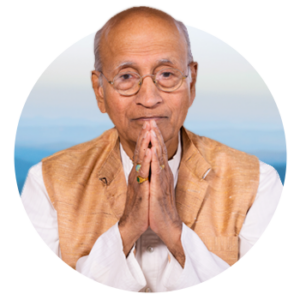ELEMENTS OF THE THREE DOSHAS
Vata
Pitta
Kapha
Air + Ether
Fire + Water
Earth + Water
ATTRIBUTES OF THE THREE DOSHAS
Vata
Pitta
Kapha
Dry
Oily
Heavy
Light
Sharp (penetrating)
Slow
Cold
Hot
Cold
Rough
Light
Oily
Subtle
Mobile
Slimy (smooth)
Mobile
Liquid
Dense
Clear
Soft
Static (stable)
Cloudy (sticky)
Commentary by Michael Dick
What are elements and attributes and what do they have to do with the doshas?
The ancient seers asserted that only substance or matter can produce an effect. If you can experience something then this experience occurs because you have come in contact with substance or matter. These seers conceived of substance or matter as having five forms. Today we say these are the continuum between energy and mass. Ultimately everything is a form of energy; conversely, all states of mass have some form of energy. This is some of what is meant by the famous equation E = mc2 –that mass and energy are interchangeable.
The seers felt that there are five states they called Space or Ether, Air, Fire, Water, and Earth. These represent the five possible states of matter. We understand them as unique by the way we experience them; we use the terms “attribute” or “quality” to describe these states of matter. We know that fire is hot and that water and earth are cold. These attributes–hot, cold, etc.–describe the way we experience each of the pure types of elements. There is a set of attributes for each element. This is shown in the tables above.
The seers also declared that certain combinations of elements have unique physiological properties and functions in nature. Substances that are predominantly composed of Ether and Air have very dynamic properties and effects. These have come to be called “vata substances.” Some substances perform digesting, metabolizing, and transforming functions and are called “pitta substances.” Similarly, kapha substances are composed of water and earth elements that have the functions to support, lubricate, secrete, etc. Knowing what elements a substance is made of is important to understanding the kinds of effects it produces. These effects are sometimes described in terms of the attributes. Thus, the elements and their attributes can help you to understand why a certain effect is produced. You can use this same logic to counteract an effect with substances or activities that contain its opposite attributes, bringing balance and health. Using the elements and their attributes in this way, we have clearer understanding of the realm of cause and effect, anatomy and physiology, structure and function.

Vasant Lad BAM&S, MASc
A native of India, he served for three years as Medical Director of the Ayurveda Hospital in Pune, India. He was Professor of Clinical Medicine at the Pune University College of Ayurvedic Medicine for 15 years. He holds a Bachelor’s of Ayurvedic Medicine and Surgery (BAM&S) degree from the University of Pune and a Master’s of Ayurvedic Science (MASc) degree from Tilak Ayurved Mahavidyalaya. The author of numerous books, Vasant Lad is respected throughout the world for his knowledge of Ayurveda.





